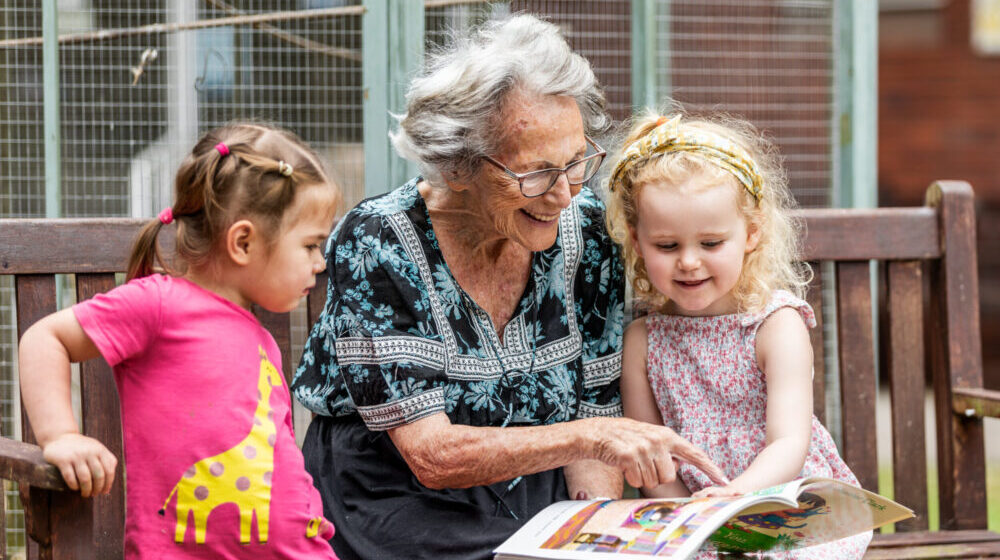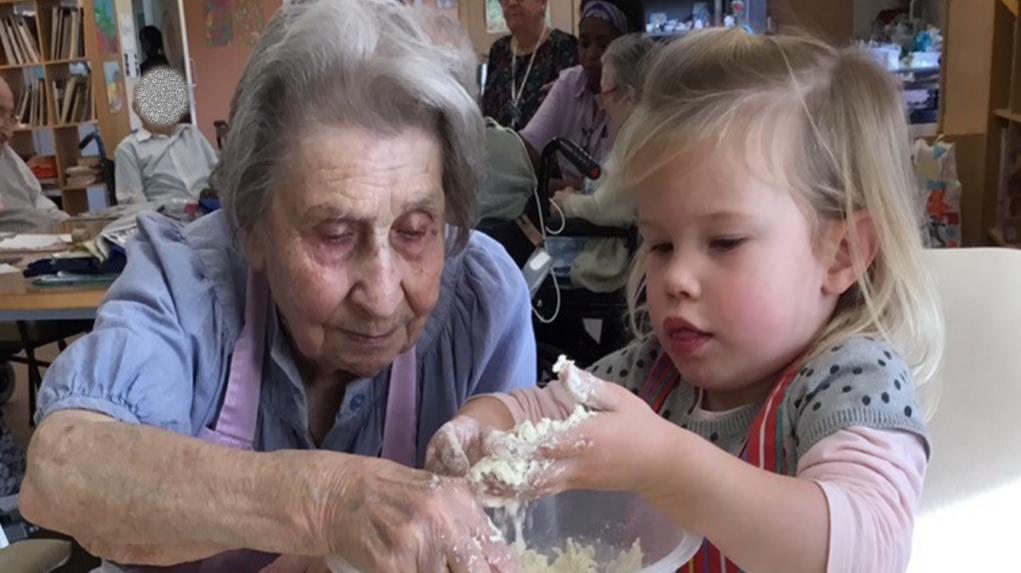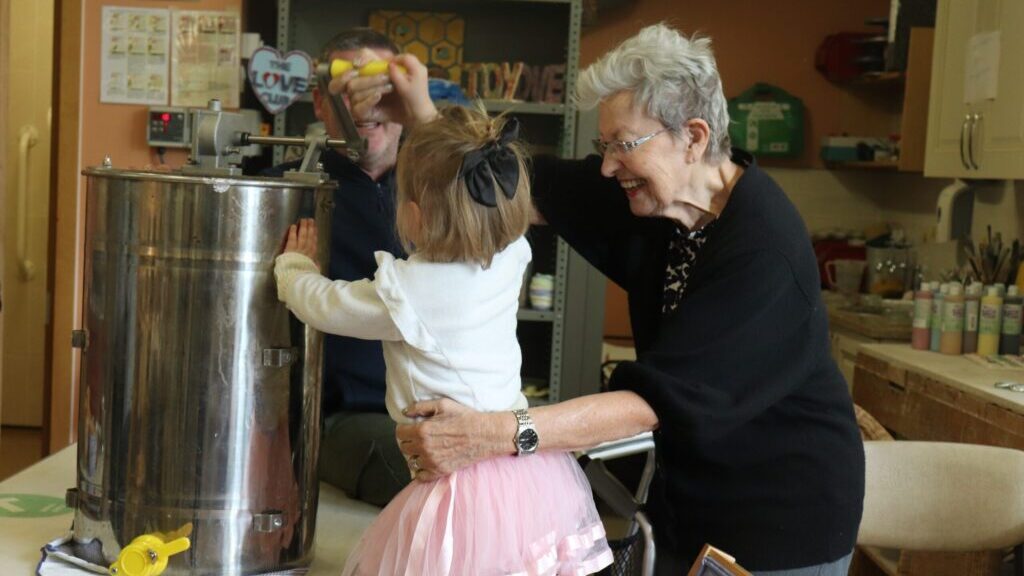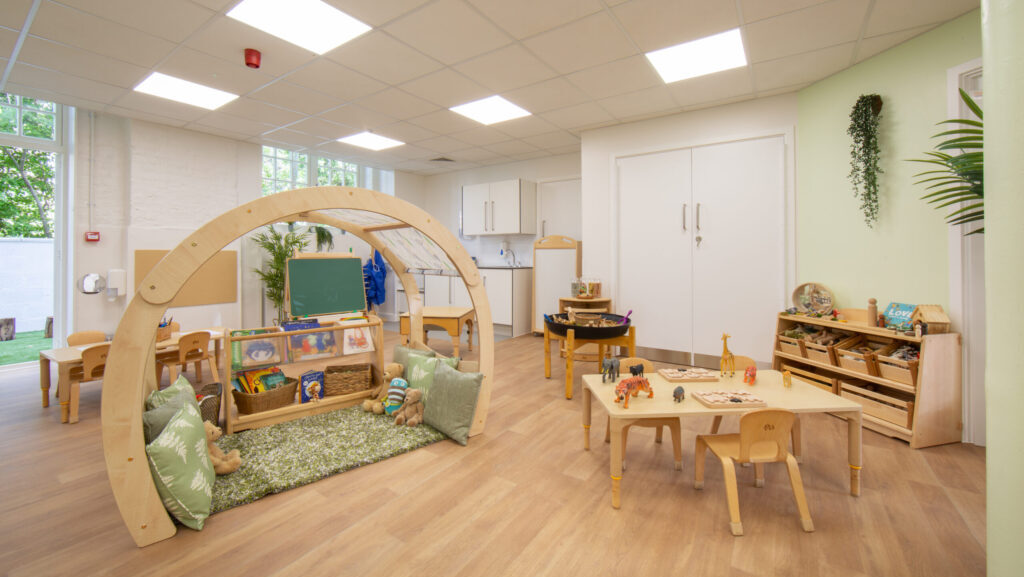The government’s recent early years strategy set out plans to work more closely with social enterprises. Zoe Raven, chief executive…
The generation game
Bringing together the youngest and the oldest in society can have huge benefits for both – but only if it is done properly, Charlotte Goddard discovers

The Sankofa bird, depicted with feet facing forward and neck curved backward, symbolises the use of learning from the past to take us into the future. This traditional Ghanian symbol has been adopted by charity Ready Generations to represent its intergenerational approach. “The saying in Ghana is that in order to go forward as a child or a young person, you have to understand where you came from,” says Sue Egersdorff, Ready Generations’ co-founder.
Ready Generations runs the Nursery in Belong, a 25-place early years setting located within the Belong care village in Chester. Belong includes both apartments for older people who can live independently, and households offering more support to those who need it.
Children and residents interact through planned intergenerational experiences and encounters in shared spaces such as the garden, creative studio, storytelling space and ‘bistro’. “Spontaneous interactions take place on a daily basis,” says Egersdorff. “That is really where deep learning often happens and enduring relationships build.”
While there are only a handful of nurseries co-located with care settings, including London’s Apples and Honey Nightingale, many early years settings are partnering with local care homes to build long-term relationships. As interest in intergenerational practice grows, it’s important to establish the foundations of quality provision.
Building relationships
“Intergenerational work is much more complex than people think, if you are ensuring it is purposeful and mutually beneficial,” says Judith Ish-Horowicz, co-founder of Apples and Honey Nightingale, which is situated in the extensive grounds of care home Nightingale House. “Activities need to be valuable, appropriate and relevant to all of the people participating. If you haven’t built relationships, you are not developing an intergenerational project.”
“We are so lucky to be able to spend lots of time with our grandfriends [as care home residents are known to the children],” says Egersdorff. “This enables us to develop deep and sustained friendships that are more difficult to achieve when visits are not consistent or regular. It is important to help children understand what is expected of them when they are around older people, particularly those living with dementia.” True intergenerational practice respects the needs of both children and elders and supports them to learn more about each other over time, she says.
The Apples and Honey Nightingale team runs play and music sessions for parents and children from the local community, as well as nursery children and grandfriends. During a session, Ish-Horowicz encourages interaction between the generations, moving toys around so toddlers gravitate towards their grandfriends. Children hand out musical instruments and toys, and everyone sings a song associated with whichever toy is drawn from the bag.

A range of tailored intergenerational activities include cooking and pottery, and children often join the residents for ceremonies such as Havdalah, which marks the end of the day of rest. While Nightingale House is Jewish, the nursery is open to those of all faiths and none, so the children take part in a wide range of cultural celebrations. Such occasions are used as learning opportunities, to encourage language development and create sensory experiences. “We spend a lot of time thinking about what kind of activities will meet the needs of specific children and grandfriends, and place them together accordingly,” says Ish-Horowicz.
Ready Generations has developed a bespoke Mirrored Curriculum Framework, setting out the principles that underpin its intergenerational work. This includes Sankofa Leadership, which places older people in the position of mentors and teachers. “We have tasked the older people to plan and deliver sessions for the children as teachers, and we then scaffold and extend the learning,” explains Egersdorff. “For example, there used to be a music hall across the road from the care village, so they developed a teaching resource for the children about music halls.”
Developmental benefits
The intergenerational approach can have huge benefits for the children. “We are seeing an incredible development in children’s language skills, personal, social and emotional skills, confidence, and ability to build relationships,” says Egersdorff.
“Schools have commented that our children are emotionally more ready for school, with better communication skills and attention spans,” says Ish-Horowicz. “Children have more empathy and they are more grounded.” These positive outcomes are often driven by attention older people can give to children. “Children benefit from one-on-one time with someone who has the time to really listen to them,” she says.
Early years managers intending to introduce intergenerational activities need an understanding of adult social care. For example, people living with dementia may find it challenging to be in an environment with lots of things on the walls. Similarly, practitioners should take the time to prepare children for visits, talking about things that might be the same and things that might be different. Managers may need to have important initial conversations with care providers around safeguarding and infection control measures.

Intergenerational training
Apples and Honey Nightingale has launched training arm, AHN Education, and has developed the UK’s first Level 3 intergenerational qualifications. Accredited by awards body NCFE Cache, the customised Level 3 Qualifications in Intergenerational Care and Education is delivered by qualified health, social care and early years lecturers through live online sessions. Students can progress from the award, which consists of one unit focusing on the principles and processes of intergenerational work, through the certificate, to the diploma. This covers a range of issues including understanding risk and making the child and older person central to practice. Early years workers will also undertake a unit covering dementia and other age-related conditions.
Generations Working Together, an intergenerational organisation based in Glasgow, offers a range of short online courses and an International Certificate in Intergenerational Practice, accredited by the CPD Standards Office.
Ready Generations plans to offer leadership days from July onwards. “These will include a formal learning workshop with a tour and opportunity to talk to the children and older people,” says Egersdorff.
With intergenerational practice in its early days, the trailblazers believe it’s important to establish some core professional principles. Using funding from the National Lottery Community Fund, AHN Education is working with Generations Working Together and Linking Generations Northern Ireland to develop a quality assurance scheme along the lines of Investors in People, which settings will be able to join to show they meet standards in areas such as safety, quality, inclusiveness, diversity, responsiveness and flexibility. Ready Generations is developing a set of leadership competencies for intergenerational work.
“We want intergenerational work to be of the highest quality, well planned and led and with clear learning outcomes,” says Egersdorff. “People often say ‘isn’t this lovely?’ – it is lovely, but there needs to be some robust professional respect and rationale around it, rather than it just being a cute thing to do.”
Latest Features
Following the Department for Education’s launch of a campaign to encourage more men into early years provision, Claudio Sisera, founder…
We talk to Bright Horizons to find out how the team approached a refurbishment of its Floral Place Nursery in…




